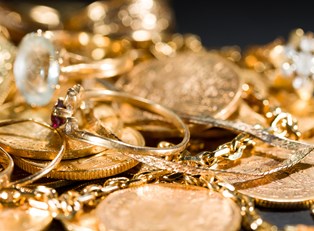In simple terms, a precious metal ETF is a document that represents an amount of precious metal held by the issuer of the note. Pegged to the value of the associated commodity, the net value of the ETF is subject to market prices. Precious metal values reflect short-term market fluctuations and react to world events. International news and possibilities of tensions between or within nations can drive the price of precious metals and precious metal ETFs.
Understanding ETFs
In the case of gold, a gold ETF representing gold bullion has the value of a specified volume of gold. This is similar to other instruments such as a mutual fund note, except that you can trade an ETF at any time the market is open. Investors do not have to hold ETF notes until a maturity date. The first precious metal ETFs appeared in 2002 in India as gold ETFs. Since then they have rapidly expanded in a short term to exchanges all over the globe. The precious metals typically represented as ETFs are gold, silver, platinum, and palladium. There is another category of mixed metal ETFs. Today capitalization for the top ranked precious metal ETFs on the New York Stock Exchange exceeds $34,500,000.
Precious metal exchange-traded funds are instruments that one can buy and sell on stock exchanges like any registered corporate instrument. They are not the actual precious metal, but notes backed by holdings of precious metals. As such, investors can trade them on stock exchanges anywhere in the world and buy them through authorized brokers. Issued in large units, brokers break down the ETF blocks into individual instruments. On many exchanges, one can buy as little as a single gold ETF share.
Why Invest in ETFs?
The advantages to precious metal ETFs over precious metals include cost, convenience, and liquidity. Many investors use precious metal holdings as a hedge against a possible widespread crisis. These ideas do not apply equally to precious metal ETFs. Paper instruments do not have the same uses as a gold bar, silver ingot, or gold or silver coins. For investors, a short-term strategy favors the ETF over bulk precious metals. The virtual precious metal holdings are flexible. Investors can buy and sell often, even daily if preferred. You can use techniques to develop a profit strategy such as instructions to sell at a certain price. Physical holdings of precious metal add tremendous costs and risks. With no physical commodity to ship, insure, or protect, transactions are easy and less costly than movements of metal commodities.
ETFs can be a solid investment for the same reasons that the underlying precious metals would be a excellent investment. Investment strategies apply equally well. You can gain short-term returns during periods of commodity sell-off by buying at a depressed price and waiting for a rebound. The advantages of the ETF or virtual precious metal include the ability to react quickly to the market, lower commissions, and fewer expenses. Information is available about the various precious metal ETFs on a given stock exchange, and you can research prices and trends to determine an investment strategy.



